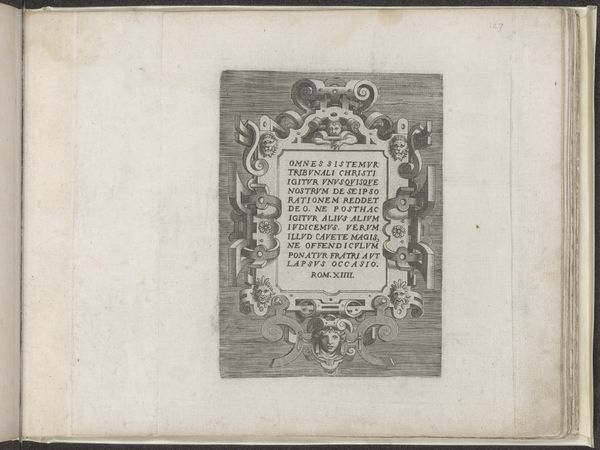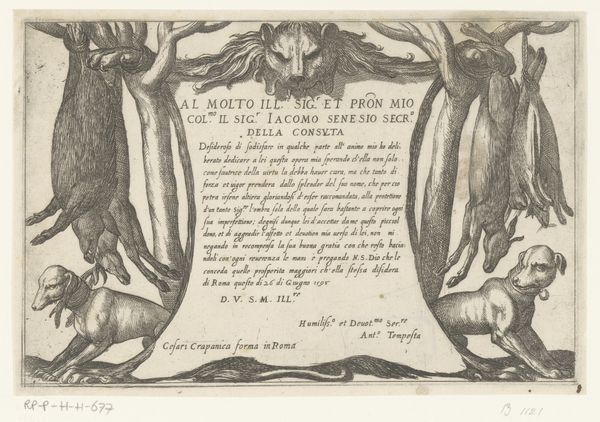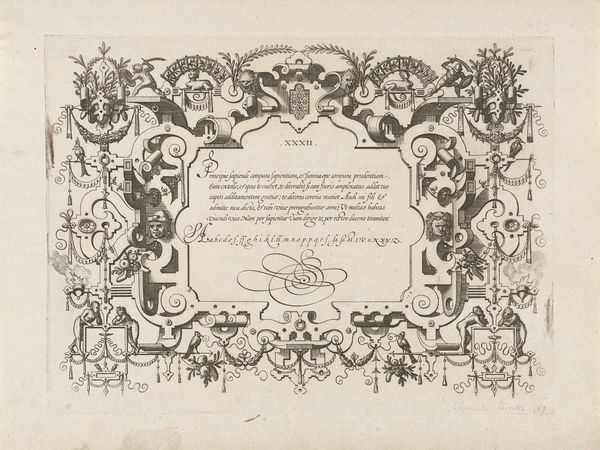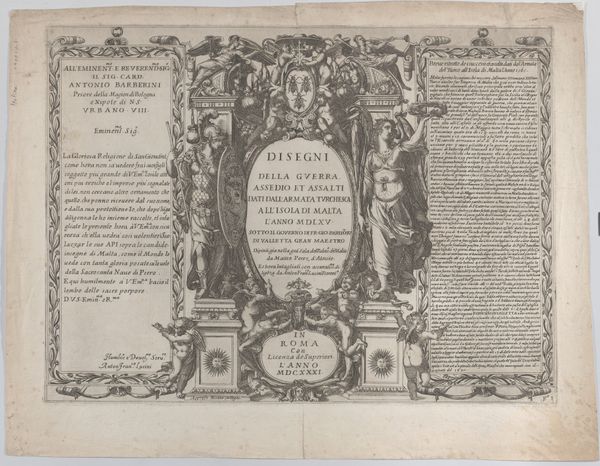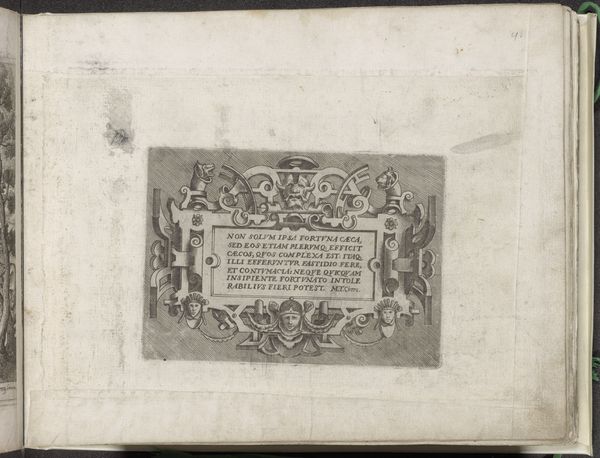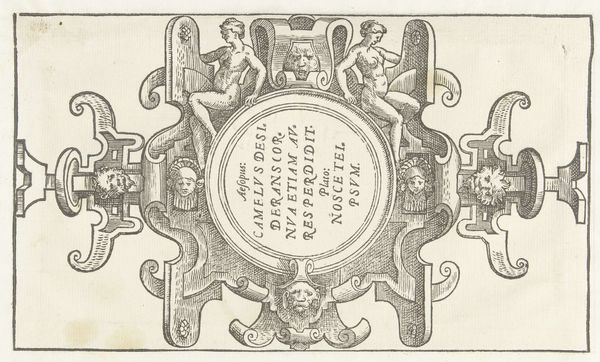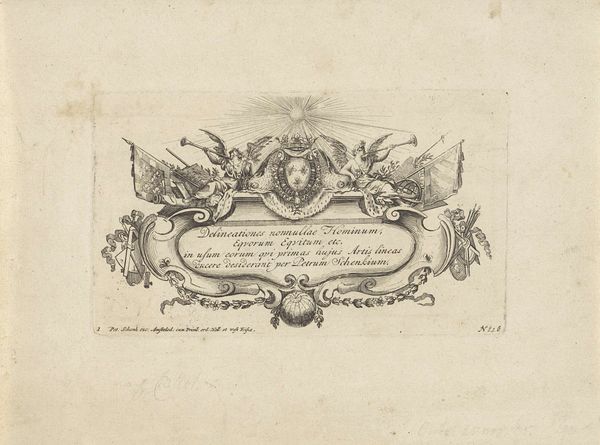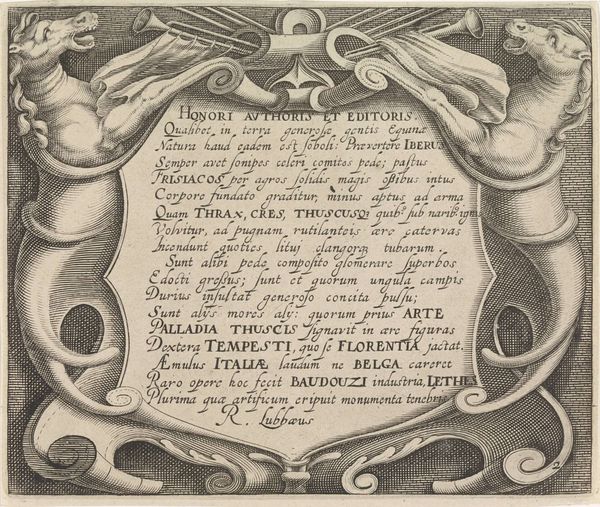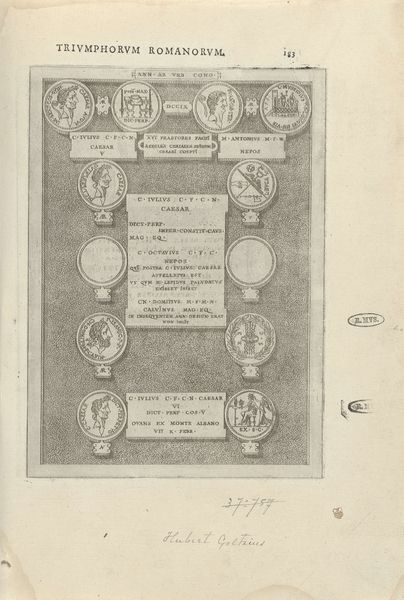
Penning op het herstel van de orde in de Nederlanden en het sluiten van de Acte van Garantie, 1790 1790
0:00
0:00
graphic-art, print, engraving
#
graphic-art
#
aged paper
#
light pencil work
#
dutch-golden-age
# print
#
old engraving style
#
pen-ink sketch
#
pen work
#
history-painting
#
engraving
#
calligraphy
Dimensions: height 207 mm, width 287 mm
Copyright: Rijks Museum: Open Domain
Curator: Looking at this engraving, I'm struck by the density of text, and its somber mood despite being about restoration. Editor: This is "Penning op het herstel van de orde in de Nederlanden en het sluiten van de Acte van Garantie, 1790," made in... well, 1790. It commemorates the restoration of order in the Netherlands, specifically tied to the Act of Guarantee. We believe it's by Johannes van Hiltrop. Curator: "Restoration" is doing a lot of work here. Order imposed through… what means exactly? I see that it is labeled in the Dutch Golden Age style, however it's materials suggest cheap production runs. Is it just ink on paper? What are we meant to make of it as a physical object meant to influence people's perceptions of governance? Editor: Right, the print medium is crucial here. Consider the political context: this engraving isn't just celebrating stability, but it's an act of constructing a particular narrative about it. It makes sense the intention behind a printed material in that historical and social context would have to communicate such ideas across multiple outlets. Curator: I wonder about the two circles. One says, in Latin, "To the heroes, fatherland, public liberty". The other contains a long inscription of similar, very official language, referring to liberation from tyranny and the establishment of lasting alliances. Were these medallions physically distributed? Editor: Most likely these engravings served as prototypes for actual medallions. Disseminating this kind of imagery was essential for solidifying the legitimacy of the ruling powers at the time. The act of creating multiple engravings or coins becomes almost as valuable, and as much as the material's inherent value. Curator: That makes perfect sense. So the materiality becomes directly linked to its political function – to spread and reinforce the idea of restored order through mass production. Editor: Exactly. Looking at this engraving, we are given some important perspectives into the complex political strategies of image circulation and material creation in that period of Dutch history. Curator: And understanding the role of printmaking sheds light on how those in power sought to control the narrative and manage public perception of historical events.
Comments
No comments
Be the first to comment and join the conversation on the ultimate creative platform.

